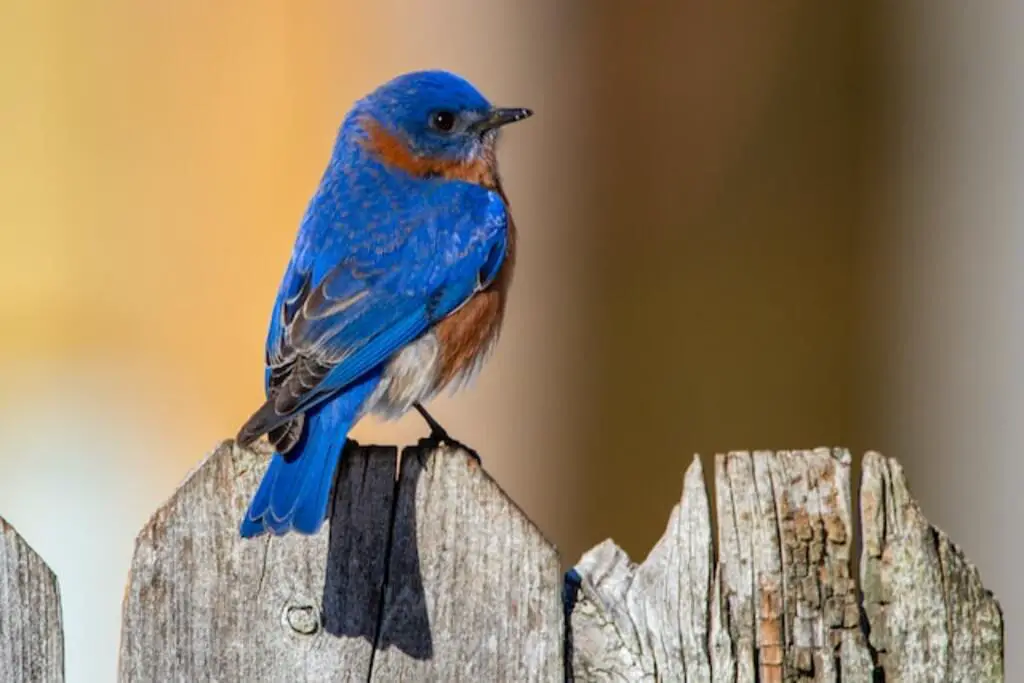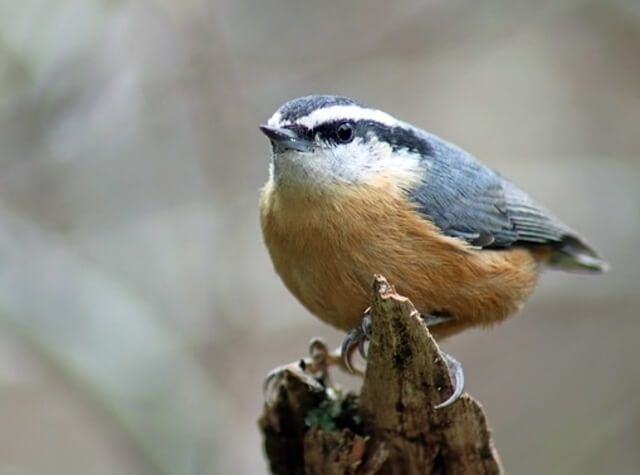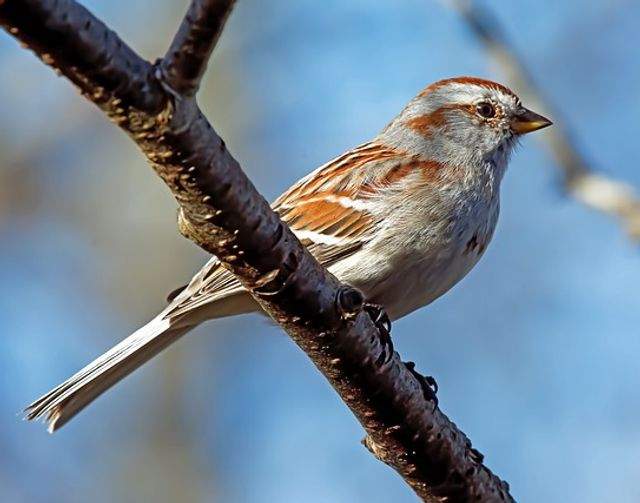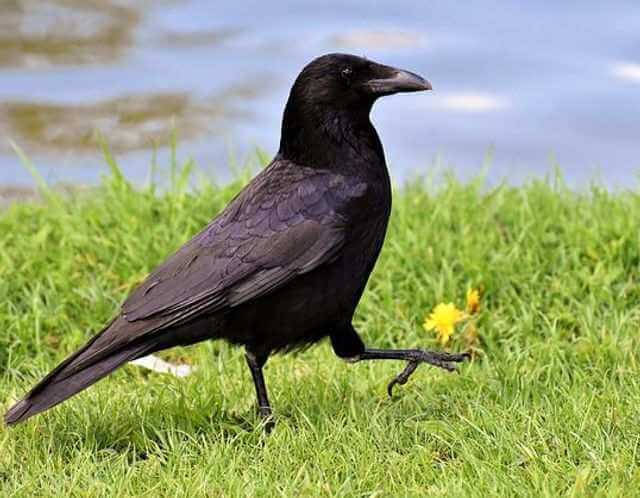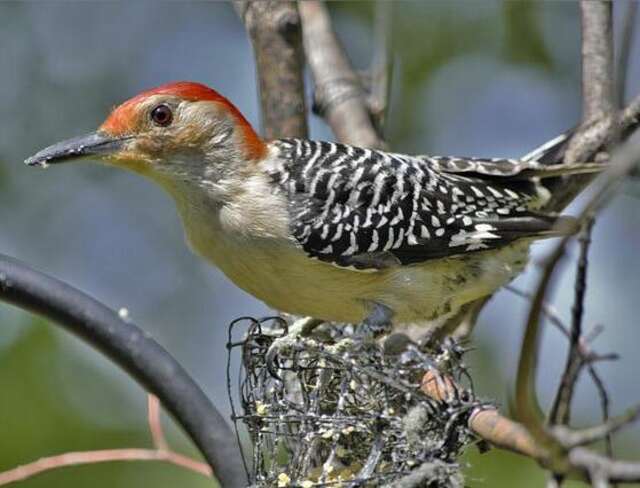Welcome to our expert guide on the 23 backyard winter birds in Maine! As winter descends upon Maine, it brings with it a diverse array of avian visitors to backyard feeders and habitats.
In this comprehensive guide, we’ll explore the fascinating world of Maine’s winter birdlife, featuring 23 species commonly observed during the colder months.
From vibrant cardinals to agile chickadees, learn about their behaviors, habitats, and survival strategies in the face of winter’s challenges.
Whether you’re a seasoned birder or a newcomer to birdwatching, join us as we celebrate the beauty and resilience of Maine’s backyard winter birds.
Table of Contents
- 1 Backyard Winter Birds in Maine
- 1.1 Black-capped Chickadee
- 1.2 American Crow
- 1.3 Blue Jay
- 1.4 White-breasted Nuthatch
- 1.5 American Goldfinch
- 1.6 Downy Woodpecker
- 1.7 Mourning Dove
- 1.8 Tufted Titmouse
- 1.9 Northern Cardinal
- 1.10 Hairy Woodpecker
- 1.11 Dark-eyed Junco
- 1.12 Red-breasted Nuthatch
- 1.13 European Starling
- 1.14 Rock Pigeon
- 1.15 House Finch
- 1.16 House Sparrow
- 1.17 American Tree Sparrow
- 1.18 American Robin
- 1.19 Common Raven
- 1.20 White-throated Sparrow
- 1.21 Song Sparrow
- 1.22 Eastern Bluebird
- 1.23 Red-bellied Woodpecker
- 2 Author
Backyard Winter Birds in Maine
Black-capped Chickadee
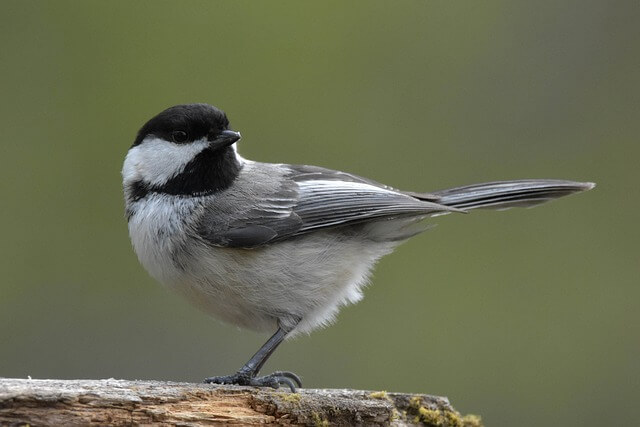
- Length: 4.7-6.0″ in (12.0-15.2 cm)
- Weight: 0.3-0.5 oz. (9-14 g)
- Wingspan: 6.3-8.3 in (16-21 cm)
- Scientific Name: Poecile atricapillus
- Frequency of Occurrence: 51.94%(Statistic by: eBird)
- Where To Find Them: The black-capped chickadee is a common winter bird in Maine during the winter. They can be seen in various locations and areas throughout the state, but are most commonly found in rural areas or open forests. They are also known to visit nearby parks or nature preserves.
- How to Attract Them: To attract chickadees to your yard in winter, you can use a tube feeder or platform feeders with black oil sunflower seeds, or peanuts another option is to install suet feeders with insect suet. Birdhouses are also a popular way to provide shelter for these birds.
General Information: Black-capped chickadees, are common winter birds in the eastern and southern United States. They have a distribution range that includes most of the United States, with a few scattered populations in Canada and Mexico. These birds primarily live in coniferous forest, but they will also inhabit mixed deciduous and hardwood forests.
The black-capped chickadee is an insectivore that eats insects, seeds, and berries. It is one of the few wild birds that regularly visits bird feeders. In winter, these birds often eat acorns.
Handpicked Related Post: Unique Black-capped Chickadee Facts You Need To Know!
American Crow
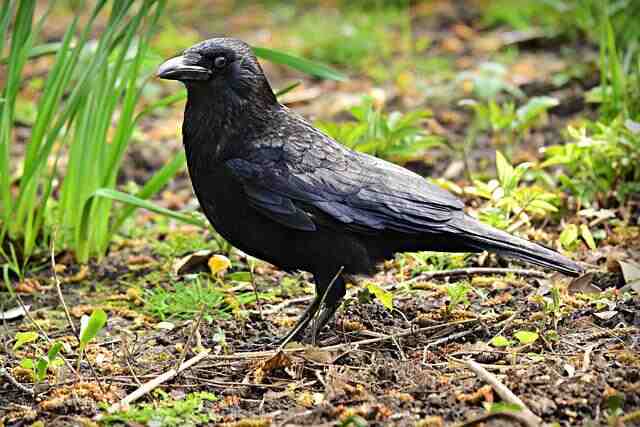
- Length: 15.8-20.9 in (40-53 cm)
- Weight: 11.2-21.9 oz. (316-620 g)
- Wingspan: 33.5-39.4 in (85-100 cm)
- Scientific Name: Corvus brachyrhynchos
- Frequency of Occurrence: 48.02%
- Where To Find Them: American crows can be seen in winter in locations or areas throughout Maine. These birds are most commonly seen near water, such as in the wetlands near Bangor or around the Penobscot River. They can also be seen at bird observatories and nature preserves like Flagstaff Lake.
- How to Attract Them: Winter is the time when American Crows become attracted to human activities in yards. One way to attract them is by using a platform feeder with a variety of food items such as corn, peanuts or sunflower seeds. The feeder should be placed in an area where the crow can see it easily, and the food should be available all winter long.
General Information: The American crow is a widespread bird in North America. The crow can be found in all 50 states, as well as most of Canada and parts of Mexico. The crow’s distribution range spans from the tundra of the far north to the tropical rainforest in Central America.
In general, crows prefer habitats with plenty of trees and other cover, but they will also inhabit urban areas and rural areas. The American crow typically eats insects, seeds, and berries, but it will also consume small mammals and even worms. In winter, crows are particularly fond of eating small rodents such as mice.
Handpicked Related Post: How To Attract Crows To Your Backyard: Expert Tips!
Blue Jay
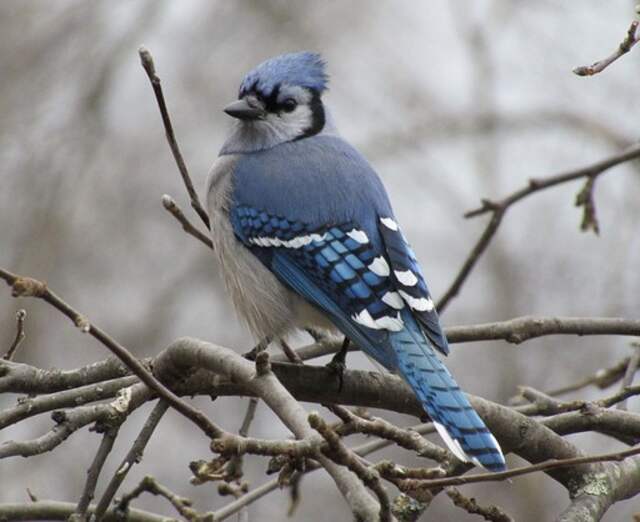
- Length: 9.8-11.8 in (25-30 cm)
- Weight: 2.5-3.5 oz. (70-100 g)
- Wingspan: 13.4-16.9 in (34-43 cm)
- Scientific Name: Cyanocitta cristata
- Frequency of Occurrence: 31.51%
- Where To Find Them: Blue Jays can be found in many locations in Maine during the winter, but some of the best places to see them are on the east side of Bath. Blue Jays are also common in other parts of New England.
- How to Attract Them: If you’re looking to attract Blue Jay to your yard in winter, there are a few things you can do. One option is to feed them cracked corn or mealworms. You can also spread sunflower seeds around the yard, and place suet near tree branches where the birds like to perch.
General Information: The blue Jay (Cyanocitta cristata) is a common bird found across much of North America. The blue Jay’s distribution range includes most of Canada and the eastern United States, south to central Mexico, and west to the Rocky Mountains.
The blue Jay inhabits a variety of habitats, from open fields to forests and from urban areas to wetlands. It feeds on insects, seeds, nuts, berries, and small animals. They are a common sight in winter, when they congregate around garbage cans to scavenge food.
Handpicked Related Post:
- 15 Best Bird Feeders For Blue Jays (Tried & Tested 2022)
- What Attracts Blue Jays to your Yard?(Expert Tips)
- What Does A Blue Jay Eat? (10 Favorite Foods Revealed!)
White-breasted Nuthatch
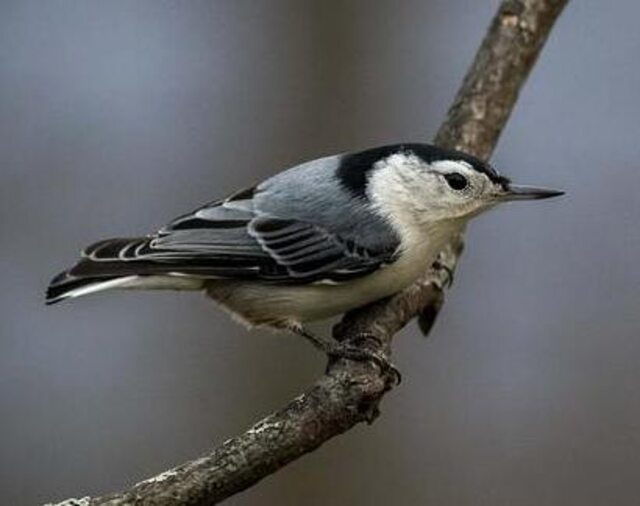
- Length: 5.1-5.5 in (13-14 cm)
- Weight: 0.6-1.1 oz. (18-30 g)
- Wingspan: 7.9-10.6 in (20-27 cm)
- Scientific Name: Sitta carolinensis
- Frequency of Occurrence: 28.38%
- Where To Find Them: It lives in coniferous forests, and can be seen in winter at various locations around the state. These spots include Presumpscot River Preserve, Farnsworth Brook Loop Trail, Baxter State Park, and The Katahdin Woods & Waters National Scenic Byway.
- How to Attract Them: If you want to attract a White-breasted Nuthatch to your yard in winter, offer them some nuts and seeds. Try feeding them sunflower seeds, mealworms, or suet. They love peanut butter too!
General Information: The white-breasted nuthatch is a common winter bird in the northeastern United States. The distribution range of this bird extends from southern New Hampshire and Massachusetts, south to Florida and west to Texas. This species prefers dense deciduous or mixed woods with plenty of low-hanging trees and shrubs for nesting.
White-breasted nuthatches are seed-eaters, but they also consume insects, fruits, nuts, fruits and berries. These birds are most commonly seen in winter when they forage for food near the ground or in low-hanging branches.
Handpicked Related Post: How to Attract Nuthatches to your Backyard? Expert Tips!
American Goldfinch
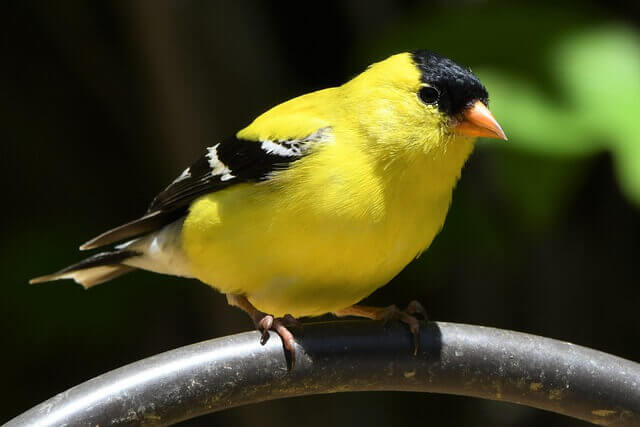
- Length: 4.3-5.1 in (11-13 cm)
- Weight: 0.4-0.7 oz. (11-20 g)
- Wingspan: 7.5-8.7 in (19-22 cm)
- Scientific Name: Spinus tristis
- Frequency of Occurrence: 27.55%
- Where To Find Them: There are several locations in Maine where you can find this bird. The best spot is likely the marshes near Boothbay Harbor.
- How to Attract Them: If you are looking to attract American Goldfinch to your yard in winter, thistle seed and sunflower seeds may be a good option for you. Both types of seeds can provide food and sustenance for these birds, which can help keep them healthy over the winter. Additionally, adding bird feeders that contain both types of seeds can provide them with the nutrition they need to survive.
General Information: The American Goldfinch is a small bird that can be found in many parts of North America. The distribution range for this bird includes most of the continent, from Alaska to Mexico. The American Goldfinch is a common winter visitor to many parts of the United States.
They are also common in Canada and much of Central America. They prefer areas with plenty of trees and bushes, as well as open areas with some tall trees. The American Goldfinch feeds on insects, seeds, nuts, fruit, and berries.
Handpicked Related Post: Interesting American Goldfinch Facts You Need to Know!
Downy Woodpecker
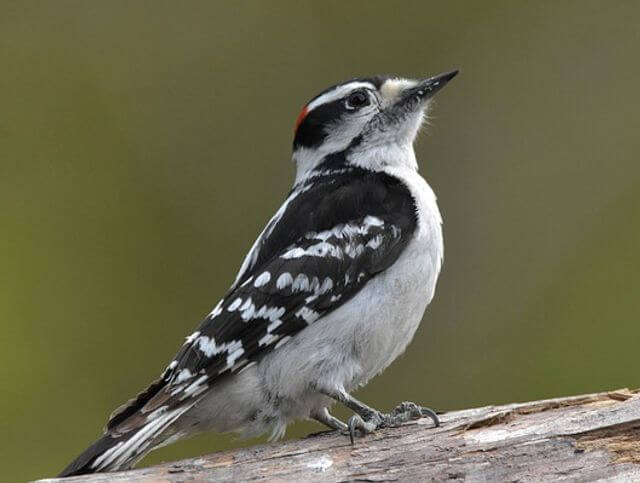
- Length: 5.5-6.7 in (14-17 cm)
- Weight: 0.7-1.0 oz. (21-28 g)
- Wingspan: 9.8-11.8 in (25-30 cm)
- Scientific Name: Picoides pubescens
- Frequency of Occurrence: 26.25%
- Where To Find Them: Youcan be found in a limited number of locations in Maine. These include parts of Downeast Maine, especially around towns like Belfast and Rockland. You’re more likely to find this woodpecker near trees with some dead branches.
- How to Attract Them: To attract these birds to your yard in the winter, you can feed them black oil sunflower seeds and millet. You can also give them peanuts as a snack. Make sure to provide plenty of natural peanut butter.
General Information: The Downy Woodpecker is a common resident in most of North America. In the north, it ranges from Alaska to Labrador and south to central Mexico. In the eastern half of North America, it stretches from Canada to Florida. In the west, it ranges from southern California to the Rocky Mountains.
It prefers deciduous and mixed woods with some coniferous trees. The Downy Woodpecker feeds mainly on insects, but will also feed on seeds and nuts. In winter, it eats tree or shrub berries, grains and seeds.
Handpicked Related Post: How to Attract Downy Woodpeckers to Your Yard? (Easy!)
Mourning Dove

- Length: 9.1-13.4 in (23-34 cm)
- Weight: 3.4-6.0 oz. (96-170 g)
- Wingspan: 17.7 in (45 cm)
- Scientific Name: Zenaida macroura
- Frequency of Occurrence: 26.22%
- Where To Find Them: The Mourning Dove is a beautiful bird that can be found in many locations in Maine. Some of the best places to find them are in the Aroostook Valley Trail, near Fort Kent, and at Windham Town Forest.
- How to Attract Them: Mourning doves are a beautiful bird to watch in the winter. They are especially attracted to sunflower seeds, safflower, nyjer, cracked corn, peanuts and millet. You can attract these birds by feeding them these foods in your yard.
General Information: The Mourning Dove is a common bird in North America. It ranges from southern Canada to central Mexico, and throughout most of the United States. The Mourning Dove is a resident breeder in much of its range, but birds may wander as far as 750 km (450 mi) from their natal area.
They are mostly found in open areas with scattered trees or shrubs, but they will also use parks, gardens, and even urban areas. The Mourning Dove feeds mainly on seeds and insects, but it will also eat small animals if available. In the winter, they will feed on waste grain and fruit that has fallen from trees.
Handpicked Related Post:
- Facts About Mourning Doves – 10 Things You Need To Know!
- Best Bird Feeder For Doves (Reviewed & Tested for 2022)
Tufted Titmouse
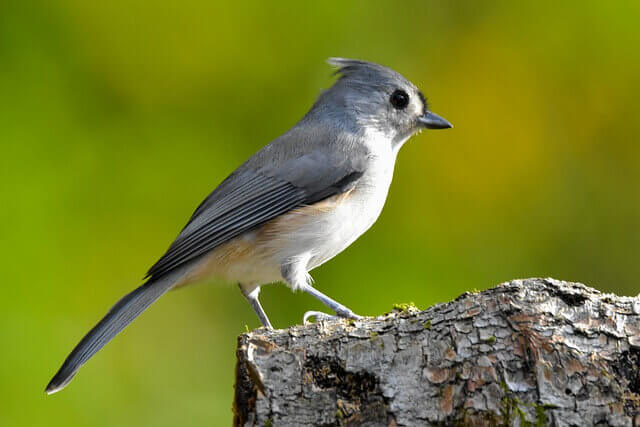
- Length: 5.5-6.3 in (14-16 cm)
- Weight: 0.6-0.9 oz. (18-26 g)
- Wingspan: 7.9-10.2 in (20-26 cm)
- Scientific Name: Baeolophus bicolor
- Frequency of Occurrence: 23.81%
- Where To Find Them: Some great places to spot this bird are Acadia National Park, Casco Bay, and Baxter State Park.
- How to Attract Them: If you want to attract a Tufted Titmouse to your yard in winter, try providing them with a mealworm diet supplemented with thistle and peanuts. Provide plenty of fresh water and shelter from the weather, and be sure to keep your yard clean and free of obstacles that the bird can’t easily access.
General Information: The Tufted Titmouse is a small bird that can be found throughout much of North America. The Tufted Titmouse has a distribution range that extends from southern Canada to central Mexico, and it can be found in a variety of habitats including deciduous and coniferous forests, suburban gardens, and fields.
The Tufted Titmouse primarily eats insects, seeds, nuts, and berries, but it will also take small animals if it finds them. In winter, the Tufted Titmouse is common in Maine where it feeds on berries, nuts, fruit and bird feeders.
Handpicked Related Post: How to Attract Tufted Titmouse to my Yard? (Explained)
Northern Cardinal

- Length: 8.3-9.1 in (21-23 cm)
- Weight: 1.5-1.7 oz. (42-48 g)
- Wingspan: 9.8-12.2 in (25-31 cm)
- Scientific Name: Cardinalis cardinalis
- Frequency of Occurrence: 22.53%
- Where To Find Them: The Northern Cardinal can be found in a number of locations in Maine. These include the towns of Gardiner and Belfast, as well as the forests near Madawaska Lake. The cardinal is most commonly seen during the morning and early afternoon.
- How to Attract Them: Northern cardinals are a beautiful bird, and they can be attracted to your yard in winter with some simple ingredients. Safflower seeds are a good choice because they are small and the Cardinals like to eat them. Black oil sunflower seeds will also provide food for the birds, and white milo may help keep them entertained.
General Information: The Northern Cardinal, Cardinalis cardinalis, is a common bird found in the eastern and central United States. The Northern Cardinal’s range includes most of the United States, as well as parts of Canada and Mexico. The habitat of the Northern Cardinal includes deciduous and coniferous forests, but it is also common in suburban areas.
The Northern Cardinal feeds on insects, seeds, nuts, berries, small animals. It is particularly fond of weed seeds. The diet of the Northern Cardinal varies depending on the season. In winter, their diet consists mostly of seeds and berries.
Handpicked Related Post:
- 10 Best Bird Feeders for Cardinals (Rated for 2022)
- Best Birdhouse for Cardinals 2022 (Tested And Rated)
Hairy Woodpecker
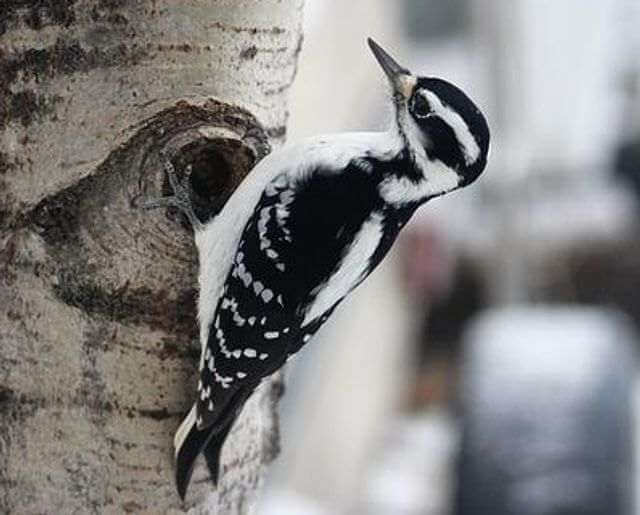
- Length: 7.1-10.2 in (18-26 cm)
- Weight: 1.4-3.4 oz. (40-95 g)
- Wingspan: 13.0-16.1 in (33-41 cm)
- Scientific Name: Leuconotopicus villosus
- Frequency of Occurrence: 20.83%
- Where To Find Them: One spot is near the town of Gorham, where you can look for the bird around trees in open fields. Another location is at Town Forest, where you can find the woodpecker near big trees.
- How to Attract Them: They are particularly fond of eating insects, so setting up a feeder with fresh insects and peanut butter is one way to attract them to your yard in winter. Another option is to set up a feeder with mealworms or black oil sunflower seeds. Both of these feeders will provide the birds with plenty of protein and vitamins, which they need in order to survive the colder months.
General Information: The hairy woodpecker is a small, stocky bird that can be found in a variety of habitats across North America. The hairy woodpecker ranges from southern Canada down to Mexico and Central America, as well as most of the eastern United States. The hairy woodpecker is primarily a woodland bird, but can also be found in mixed forests and even open fields.
The hairy woodpecker diet consists mainly of wood-boring insects and berries, but it will also eat seeds occasionally. The breeding season for the hairy woodpecker is from March to early June, and the chicks are fed by their parents until they are able to fly. The lifespan of the hairy woodpecker is typically around 10 years.
Dark-eyed Junco
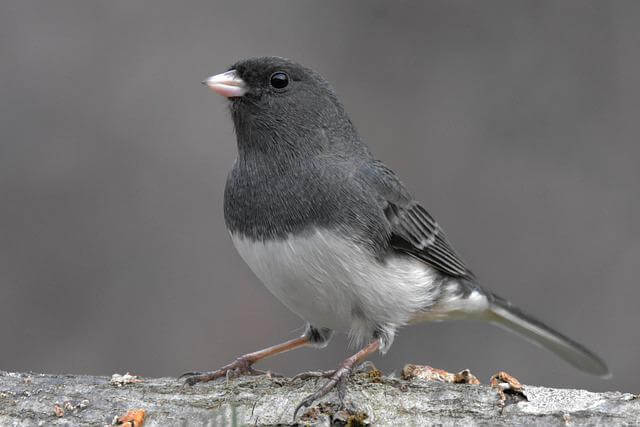
- Length: 5.5-6.3 in (14-16 cm)
- Weight: 0.6-1.1 oz. (18-30 g)
- Wingspan: 7.1-9.8 in (18-25 cm)
- Scientific Name: Junco hyemalis
- Frequency of Occurrence: 20.77%
- Where To Find Them: The Dark-eyed Junco is a common bird found in many locations throughout Maine. These birds can be found in wooded areas and agricultural areas. Some of the best locations to find these birds are in Augusta, Waterville, and Presque Isle.
- How to Attract Them: One way to attract Dark-eyed Juncos to your yard in winter is to offer them hulled sunflower seeds. White proso millet is also a good food for these birds, as it is high in protein and low in sugar. Cracked corn can also provide an interesting food source for these birds.
General Information: The Dark-eyed Junco is a common bird found in nearly every state in the United States. These birds are usually found in woodlands, but can also be found near suburbs and cities. The Dark-eyed Junco ranges from Alaska to North Carolina and has been documented as far south as Mexico. They are usually seen in flocks of up to 20 individuals.
The diet of the Dark-eyed Junco includes seeds, nuts, grains, insects, berries. They will also eat small animal matter such as spiders and lizards. The female lays 3-6 eggs and incubates them for 13 days before they hatch. The young birds fledge after about 11 days and are able to fly as good as the parents after about a month.
Handpicked Related Post: Fun Facts About Dark-eyed Juncos
Red-breasted Nuthatch
- Length: 4.3 in (11 cm)
- Weight: 0.3-0.5 oz. (8-13 g)
- Wingspan: 7.1-7.9 in (18-20 cm)
- Scientific Name: Sitta canadensis
- Frequency of Occurrence: 15.55%
- Where To Find Them: You can find this nuthatch in locations all over Maine, though it’s especially common in central and eastern parts of the state.
- How to Attract Them: If you’re looking to attract the Red-breasted Nuthatch to your yard in winter, some key items to include in your birdfeeder are sunflower seeds, mealworms, suet, and peanut butter. The nuthatch is a bird that enjoys eating nuts and seeds, so using these items in feeders will give them something to eat as well as provide them with a source of warmth. You can also try scattering nuts and seeds around your yard in areas where the birds are known to forage.
General Information: The red-breasted nuthatch is a common and widespread bird in North America. It ranges from coastal Maine and New England to southern Texas, northern Mexico, and the Caribbean. The nuthatch is found in a variety of habitats including deciduous and coniferous forests, urban gardens, woodlands, and suburban areas. It eats mainly seeds but also eats insects, larvae, and other small creatures.
The red-breasted nuthatch has a long life cycle which includes four stages: young, adult, male wintering range, and female wintering range. The red-breasted nuthatch is a social bird that forages in groups or pairs. It typically nests in dead tree cavities that have been excavated by another bird.
European Starling
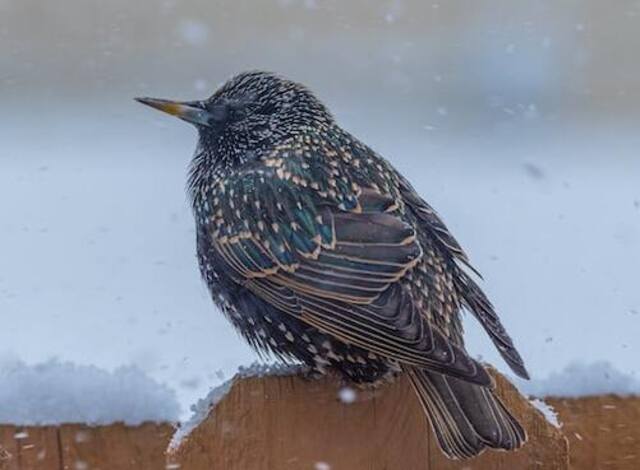
- Length: 7.9-9.1 in (20-23 cm)
- Weight: 2.1-3.4 oz. (60-96 g)
- Wingspan: 12.2-15.8 in (31-40 cm)
- Scientific Name: Sturnus vulgaris
- Frequency of Occurrence: 13.68%
- Where To Find Them: The European Starling is a common bird in Maine, but you can find their nests only in certain locations. One such location is the Forks of the Salmon Falls River, near Fryeburg. Another location is in the Blue Hill Mountains, near Gorham.
- How to Attract Them: European Starlings can be difficult to attract to your yard in winter. One way to try is by feeding them dried mealworms, cracked corn, peanut kernels, sunflower kernels, or suet balls hung from a tree.
General Information: European starlings are a common bird in North America, but they are not found as far south as the United States. European starlings live in a range that stretches from northern Europe to central Asia. They prefer open areas with plenty of trees and flowers, but they will also live near human settlements. European starlings are omnivorous and eat seeds, nuts, berries, grains, insects, and other small animals.
They usually build their nests in cavities but can also build nests in crevices, eaves and birdhouses. European starling chicks grow quickly and learn to fly within a few weeks after hatching. Adult starlings are very social creatures and often gather in large groups during the morning and evening hours.
Handpicked Related Post: How To Attract European Starlings To Your Yard Fast?
Rock Pigeon
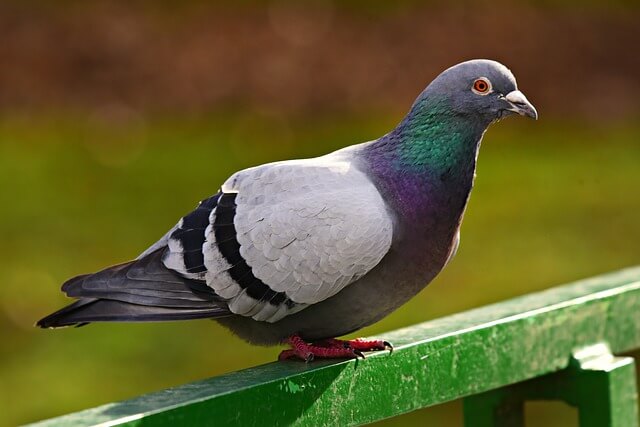
- Length:11.8-14.3 in(30-36 cm)
- Weight: 9.3-13.4 oz. (265-380 g)
- Wingspan: 19.7-26.5 in (50-67 cm)
- Scientific Name: Columba livia
- Frequency of Occurrence: 11.08%
- Where To Find Them: The Rock Pigeon is a common bird found in many locations in Maine. You can find them in forests, meadows, and on cliffs.
- How to Attract Them: If you want to attract a Rock Pigeon to your yard in winter, offer them some of their favorite foods. Sunflower and safflower seeds are both good choices, as are peanuts (without the shell) and millet. Thistle and corn also make good choices.
General Information: The Rock Pigeon is a bird that ranges throughout the eastern and central United States. The Rock Pigeon is a member of the pigeon family, Columbidae. In North America, it is found in open woodland and prairies, as well as in urban neighborhoods. The Rock Pigeon feeds on seeds, fruits, and invertebrates.
The Rock Pigeon has a long life cycle. It breeds in between March and June, and again between August and November, and typically lays two eggs per clutch. The young fledge after about six weeks and can fly shortly thereafter. Adult Rock Pigeons usually live for about four years, but can survive up to six years. They are territorial birds that build nests out of sticks and feathers.
Handpicked Related Post: Birds that look like Pigeons (Photos, ID & Stats)
House Finch
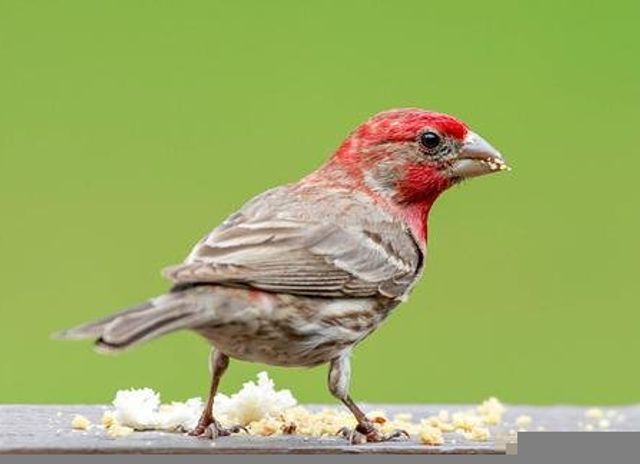
- Length: 5.1-5.5 in (13-14 cm)
- Weight: 0.6-0.9 oz. (16-27 g)
- Wingspan: 7.9-9.8 in (20-25 cm)
- Scientific Name: Haemorhous mexicanus
- Frequency of Occurrence: 11.05%
- Where To Find Them: The best places to see this species are in the forests near Baxter State Park, and on Long Island.
- How to Attract Them: House Finches be attracted to your yard with the right food and habitat in winter. Seeds like sunflower seeds, safflower seeds, and millet will all attract these birds. Thistle is also a good seed for attracting House Finches in winter. Place these seeds in bird feeders or on the ground near trees where the House Finch can access them.
General Information: House finches are a small bird that ranges throughout North America. They are found in the eastern and western U.S., as well as in Central America, Mexico, and the Caribbean. The house Finch is a common resident of city parks and suburban gardens. The house Finch gets its name from its habit of living in houses or other human-created structures.
These birds love to eat seeds, fruit, buds, and weed seeds. However, they will also scavenge for food if necessary. Their diet varies depending on where they live; for example, in the east they eat more insects than in the west.
Handpicked Related Post: How to Attract House Finch to your Yard? (Easy & Fast)
House Sparrow
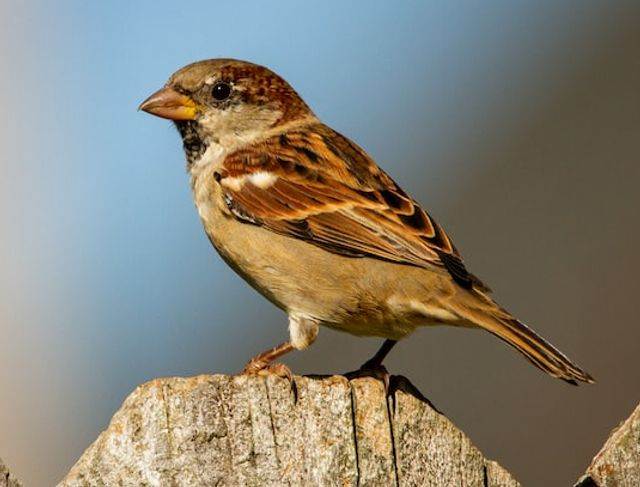
- Length: 5.9-6.7 in (15-17 cm)
- Weight: 0.9-1.1 oz. (27-30 g)
- Wingspan: 7.5-9.8 in (19-25 cm)
- Scientific Name: Passer domesticus
- Frequency of Occurrence: 10.76%
- Where To Find Them: The House Sparrow prefers open areas with plenty of vegetation, such as parks and gardens. You can find them in many locations around the State, but some places to look are: Acadia National Park, Boothbay Harbor State Park, Cadillac Mountain State Park, and Fort Kent State Park.
- How to Attract Them: In winter, House Sparrows will seek shelter from the cold. One way to attract House Sparrows to your yard in winter is to feed them sunflower seeds and peanuts. You can also offer them suet or thistle nyjer as a food source.
General Information: House sparrows are a common bird in North America. They range from the Yukon to Central Mexico and from Florida to British Columbia. The house sparrow is found most commonly in urban areas, open landscapes, and agricultural areas.
The house sparrow feeds primarily on grains and seeds, discarded food, and insects. They build nests of twigs, grasses, or other plant material in which they lay two to eight eggs. House sparrows usually hatch after 12 days and fledge after about 28 days.
Handpicked Related Post: How to Attract Sparrows to your Backyard? (Like A Pro)
American Tree Sparrow
- Length: 5.5 in (14 cm)
- Weight: 0.5-1.0 oz. (13-28 g)
- Wingspan: 9.4 in (24 cm)
- Scientific Name: Spizelloides arborea
- Frequency of Occurrence: 10.62%
- Where To Find Them: The American Tree Sparrow can be found in a number of locations in Maine. These include Acadia National Park, Baxter State Park, Camden Hills Regional Park, Cape Elizabeth Regional Park, Casco Bay, Deer Isle, and Fort Williams Historical Park in Bath.
- How to Attract Them: If you’re looking to attract American Tree Sparrows to your yard in winter, there are a few things you can do. One way is to feed them sunflower seeds. Another way is to give them peanut hearts or suet. And lastly, you can give them thistle seed as well.
General Information: The American Tree Sparrow is a common bird throughout much of the eastern United States. The American Tree Sparrow ranges throughout most of the eastern United States, from Texas north to New Hampshire and east to southeastern Canada. This Sparrow is found in mixed woodlands and open areas with plenty of food sources such as insects, fruit, and seeds.
This Sparrow prefers to live in habitats that are both dense and open, so it can see plenty of potential prey. It breeds in between May and September on or near the ground or in shrubs. They layone brood per season, with each clutch size containing 4-6 eggs. Eggs are then incubated for 10-14 days until hatched, and the young fledge the nest in 2-3 weeks.
Handpicked Related Post: 10 Fascinating American Tree Sparrow Facts
American Robin
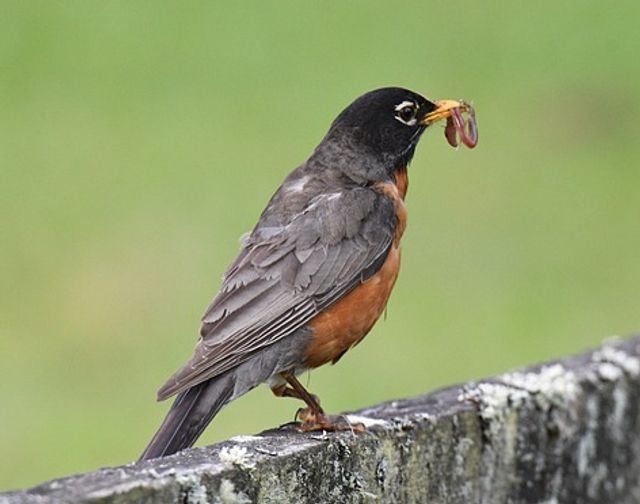
- Length: 7.9-11.0 in (20-28 cm)
- Weight: 2.7-3.0 oz. (77-85 g)
- Wingspan: 12.2-15.8 in (31-40 cm)
- Scientific Name: Turdus migratorius
- Frequency of Occurrence: 9.25%
- Where To Find Them: In Maine, you can find the American Robin at locations such as the Central Penjajawoc Preserve and The Scarborough River Wildlife Sanctuary.
- How to Attract Them: A platform feeder with mealworms will provide the birds with a steady stream of food, making it easy for them to find and eat. Place the feeder in a location where the robins can see it easily, and make sure to add fresh food once or twice a day.
General Information: The American Robin is a common bird in North America. It ranges from Canada south to Central America, and west to Texas and New Mexico. The American Robin is a cavity nester, preferring old abandoned woodpecker holes or other small openings in trees.
The American Robin feeds on insects, worms, spiders, and other small creatures. It will also eat fruits and berries. The male American Robin sings during courtship and during the mating season. The American Robin lifespan is approximately six years in the wild, but can live up to fifteen years in captivity.
Handpicked Related Post:
- 5 Best Bird Feeders For Robins (Tested & Rated For 2022)
- How To Attract Robins To Your Yard – 7 Best Tips!
Common Raven
- Length: 22.1-27.2 in (56-69 cm)
- Weight: 24.3-57.3 oz. (689-1625 g)
- Wingspan: 45.7-46.5 in (116-118 cm)
- Scientific Name: Corvus corax
- Frequency of Occurrence: 8.18%
- Where To Find Them: Some popular spots to find Ravens are in Acadia National Park, where they can be found scavenging for food on the ground; in Cape Elizabeth, where they can often be seen perched on tall power lines; and along the coast, where they frequent seashores and tidal pools.
- How to Attract Them: Ravens are intelligent birds that can be attracted to your yard in winter by providing them with a platform feeder with mealworms or unshelled peanuts.
General Information: Common ravens live in North America, Europe, and Asia. They have a wide range and can be found in many different habitats, from open fields to forests. These birds are omnivorous and eat a variety of food, including plants, berries, fruits, grains and meat. Ravens generally nest in colonies of up to 20 pairs.
They lay two eggs and care for the chicks for about 28 days before they fledge. Ravens are intelligent birds that are active during the day and often scavenge food from humans or other animals. They are social animals that live in groups and often cooperate to hunt or raid food sources.
Handpicked Related Post: 18 Fun Facts About Ravens That Will Amaze You
White-throated Sparrow
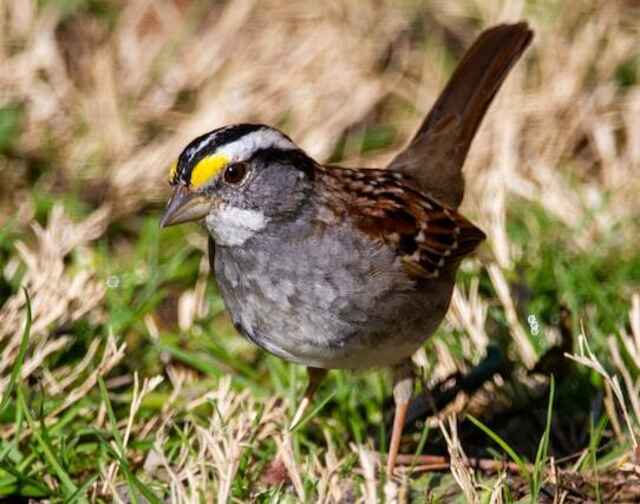
- Length: 6.3-7.1 in (16-18 cm)
- Weight: 0.8-1.1 oz. (22-32 g)
- Wingspan: 7.9-9.1 in (20-23 cm)
- Scientific Name: Zonotrichia albicollis
- Frequency of Occurrence: 7.55%
- Where To Find Them: These birds can be found in open areas such as fields, meadows, and prairies. Some locations where you may find this bird include the Riverside Park, and the Bowdoinham Wildlife Management Area.
- How to Attract Them: In order to attract this bird to your yard, you can feed them millet or sunflower seeds. You can set up a birdfeeder in your yard and fill it with these types of seeds.
General Information: The white-throated sparrow is a common bird found throughout the United States. It is most commonly found in the southern and eastern portions of the country, but can also be found in the Midwest and parts of Canada. The white-throated sparrow ranges from lower elevations to high elevations, but favors moist areas such as river valleys, wet meadows, and flood plains.
This bird generally feeds on seeds and insects, but will also eat fruit if available. The white-throated sparrow typically nests in trees or on ledges, but will also nest on the ground. The female lays three to six eggs, which are incubated by the male. The chicks fledge around fourteen days after hatching and are able to fly shortly after fledging.
Song Sparrow
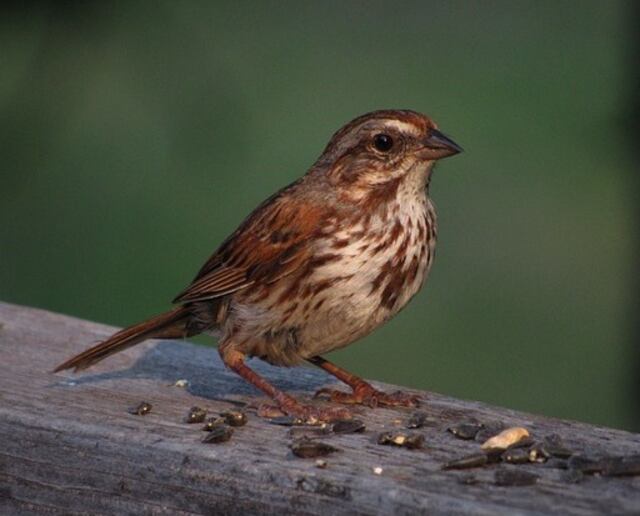
- Length: 4.7-6.7″ in (12-17 cm)
- Weight: 0.4-1.9 oz. (12-53 g)
- Wingspan: 7.1-9.4 in (18-24 cm)
- Scientific Name: Melospiza melodia
- Frequency of Occurrence: 6.90%
- Where To Find Them: Some of the locations where you may find the Song Sparrow include Casco Bay, Downeast Maine Wildlife Preserve, and Sebago Lake.
- How to Attract Them: Winter is a great time to attract song sparrows to your yard. One way to do this is by feeding them millet. Sunflower seed can also be a good food source for these birds. You can spread these seeds around in shallow areas or to use them in bird feeders.
General Information: Song sparrows are one of the most common bird species in North America. They are found throughout most of the continent, except for the extreme north and south. These small songbirds have a wide range and can be found in a variety of habitats, from coastal scrub to open oak and coniferous forests. Song sparrows are insectivores, eating mostly seeds but also consuming fruit when available.
Their life cycle is fairly typical for a small bird: they breed in spring and summer, lay eggs in late summer or early fall, and fledge their young in late winter or early spring. Song sparrows behave like many other small birds by foraging on the ground or in low vegetation. They tend to be shy but curious birds that will often explore new areas.
Eastern Bluebird
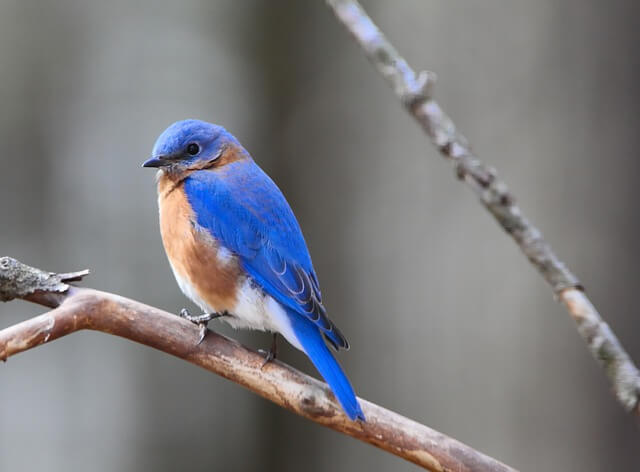
- Length: 6.3-8.3 in (16-21 cm)
- Weight: 1.0-1.1 oz. (28-32 g)
- Wingspan: 9.7-12.5″in. (25-32 cm)
- Scientific Name: Sialia sialis
- Frequency of Occurrence: 6.84%
- Where To Find Them: Eastern Bluebirds can be found in a variety of locations throughout Maine, including the following: the Aroostook National Wildlife Refuge, the Baxter State Park, and the Kittery Trading Post. These birds are often seen perched atop telephone poles or other tall structures, and are very common in forests and woodlands.
- How to Attract Them: If you are looking to attract the Eastern Bluebird to your yard in winter, you may want to consider feeding them mealworms or suet. Both of these options will provide the birds with a nutritious snack that they will eagerly seek out. You can also offer sunflower hearts as a supplementary food source. By providing these helpful tips, you can help ensure that the Eastern Bluebird remains healthy and happy during the colder months.
General Information: The eastern bluebird ranges across the eastern half of North America. This bird is found in a variety of habitats, from open woodland to dense urban gardens. The diet of the eastern bluebird includes insects, wild fruit and berries. The eastern bluebird is a year-round resident of North America, breeding in spring and winter. The life cycle of the eastern bluebird includes two phases: the nestling phase and the adult phase.
The nestling phase lasts for about 17 days, after which the young birds leave the nest to fledge. In the adult phase, the eastern bluebird remains on its territory for about two months before migrating to new areas. Eastern bluebirds are gregarious birds and form large flocks during migration.
Handpicked Related Post:
- How to Attract Eastern Bluebirds to your Yard (Explained)
- 9 Best Birdhouses for Bluebirds (Top Picks for 2022)
- 60 Fun Facts About Eastern Bluebirds (You Didn’t Know!)
Red-bellied Woodpecker
- Length: 9.4 in (24 cm)
- Weight: 2.0-3.2 oz. (56-91 g)
- Wingspan: 13.0-16.5 in (33-42 cm)
- Scientific Name: Melanerpes carolinus
- Frequency of Occurrence: 6.62%
- Where To Find Them: Maine is home to a couple of wildlife hotspots where you can see the Red-bellied Woodpecker. Some of these locations include the Acadia National Park, and Baxter State Park.
- How to Attract Them: In order to attract them to your yard in winter, you will need to provide them with food that they prefer. One way to do this is to give them suet or peanut feeders. You can also offer mealworms or cracked corn as a snack. Make sure that the feeders are placed close to a tree so that the woodpeckers can get a good view of what’s available. You can also try putting out sunflower seeds as a lure, as these birds love seeds!
General Information: The red-bellied woodpecker is a common bird found in the eastern United States. The range of this bird stretches from southern Canada to Florida, and includes most of New England. This woodpecker prefers to live in mixed hardwood and pine forests, but will also be found in areas with maples, oaks, and other trees.
Red-bellied woodpeckers are migratory, traveling long distances each year in search of food. They feed mostly on insects, but also consume fruits and nuts. The red-bellied woodpecker has a long life span, typically living up to 12 years in the wild.
Handpicked Related Post: How to Attract Red-bellied Woodpeckers to your Yard?
Related Post: Most Common Backyard Birds In Maine (Explained)

